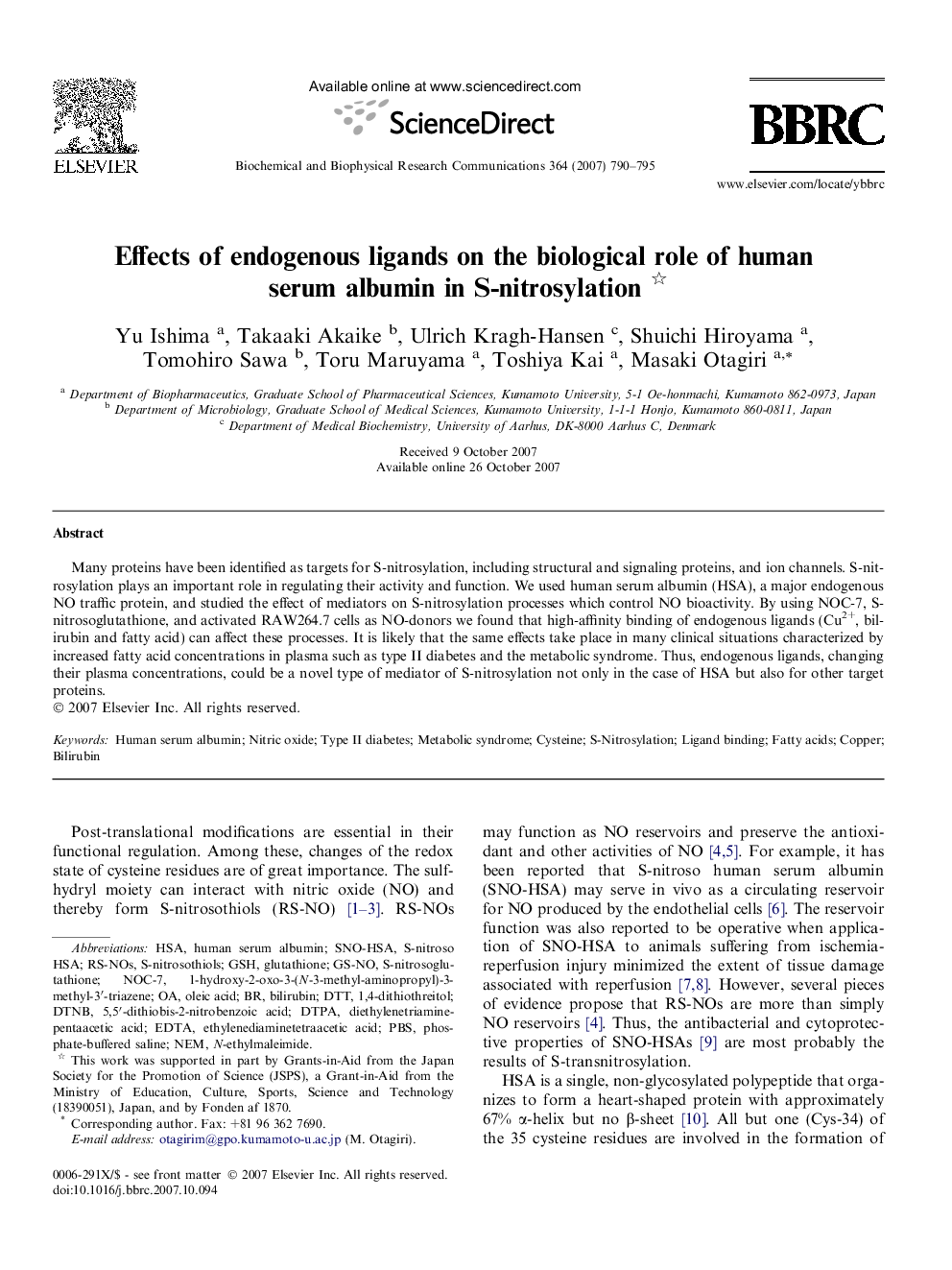| Article ID | Journal | Published Year | Pages | File Type |
|---|---|---|---|---|
| 1936235 | Biochemical and Biophysical Research Communications | 2007 | 6 Pages |
Many proteins have been identified as targets for S-nitrosylation, including structural and signaling proteins, and ion channels. S-nitrosylation plays an important role in regulating their activity and function. We used human serum albumin (HSA), a major endogenous NO traffic protein, and studied the effect of mediators on S-nitrosylation processes which control NO bioactivity. By using NOC-7, S-nitrosoglutathione, and activated RAW264.7 cells as NO-donors we found that high-affinity binding of endogenous ligands (Cu2+, bilirubin and fatty acid) can affect these processes. It is likely that the same effects take place in many clinical situations characterized by increased fatty acid concentrations in plasma such as type II diabetes and the metabolic syndrome. Thus, endogenous ligands, changing their plasma concentrations, could be a novel type of mediator of S-nitrosylation not only in the case of HSA but also for other target proteins.
